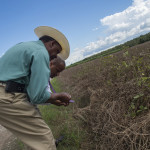TALLAHASSEE, Fla. – For many Floridians who need help recovering from Hurricane Matthew, registering with FEMA and completing a disaster loan application from the U.S. Small Business Administration (SBA) are essential.
To be considered for all forms of disaster assistance, survivors should first register for assistance with FEMA, in any of the following ways:
- Online at disasterassistance.gov;
- On the FEMA Mobile App;
- Call FEMA at 800-621-3362 (voice, 711/VRS-Video Relay Service) (TTY: 800-462-7585). Multilingual operators are available (for Spanish, press 2);
- At a Disaster Recovery Center (DRC). To find the nearest one, go online to the DRC locator at asd.fema.gov/inter/locator. SBA representatives at all Disaster Recovery Centers will help individuals complete and submit loan applications and answer any questions.
Second to insurance, SBA low-interest disaster loans are the primary source of financial assistance to rebuild disaster-damaged private property for homeowners, renters, businesses of all sizes, and private nonprofit organizations. A completed SBA loan application is also an important step in order to qualify for other state and FEMA grants that cover personal property, vehicle repair or replacement, moving and storage expenses and other help.
SBA loans are low-interest, and long-term. In some cases, SBA can refinance all or part of an existing mortgage. SBA loan officers work to come up with a plan that fits a survivor’s budget.
Businesses and private nonprofit organizations may borrow up to $2 million to repair or replace disaster damaged or destroyed real estate, machinery and equipment, inventory, and other business assets.
For small businesses, small agricultural cooperatives, small businesses engaged in aquaculture and most private nonprofit organizations, the SBA offers Economic Injury Disaster Loans to help meet working capital needs caused by the disaster. Economic Injury Disaster Loan assistance is available regardless of whether the business suffered any physical property damage.
Disaster loans up to $200,000 are available to homeowners to repair or replace disaster damaged or destroyed real estate. Homeowners and renters are eligible for $40,000 to repair or replace disaster damaged or destroyed personal property. If SBA does not offer a homeowner or renter a loan, they are referred to FEMA for possible additional grant consideration.
The SBA disaster declaration covers the counties of Brevard, Duval, Flagler, Indian River, Nassau Putnam, Seminole, St. Johns and Volusia, which are eligible for both Physical and Economic Injury Disaster Loans from the SBA. Small businesses and most private nonprofit organizations in the following adjacent counties are eligible to apply only for SBA Economic Injury Disaster Loans: Alachua, Baker, Bradford, Clay, Lake, Marion, Okeechobee, Orange, Osceola and St. Lucie.
The SBA has opened Business Recovery Centers (BRC) in St. Johns and Volusia counties to help Florida businesses impacted by Hurricane Matthew:
- St. Johns County: St. Johns County Chamber of Commerce, 1 News Place, Suite C, St. Augustine, FL 32086
Hours: Monday – Friday from 9 a.m. to 5 p.m.
- Volusia County: Florida Department of Health-Volusia County, 1845 Holsonback Dr., Daytona Beach, FL 32117
Hours: Monday – Friday from 9 a.m. to 6 p.m.
Additional details on the loan application process can be obtained by calling the SBA Customer Service Center at 800-659-2955 (TTY: 800-877-8339 for the deaf and hard-of-hearing) or by sending an email to disastercustomerservice@sba.gov (link sends e-mail), or visit http://www.sba.gov/disaster. Applicants may also apply online using the Electronic Loan Application (ELA) via SBA’s secure website at https://disasterloan.sba.gov/ela.
Source:
FEMA Registration and SBA Disaster Loan Application are Key to Hurricane Recovery




